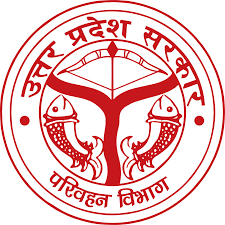In a sweeping administrative push that blends digital innovation with grassroots enforcement, the Uttar Pradesh Transport Department has executed 80 major reforms between January and July 2025, redefining how transport governance operates in India’s largest state.
From eliminating in-person paperwork to expanding electric vehicle access, deploying AI for enforcement, and fast-tracking promotions for frontline staff, the department’s efforts mark one of the most ambitious public mobility transformations seen at the state level.
Faceless, Paperless, and Citizen-First
At the core of the reforms lies a radical shift toward faceless and digital public service delivery. Through a vast network of 1.5 lakh Common Service Centres (CSCs), 45 transport-related services—ranging from driving licenses to registration certificates—are now available at the doorstep.
In partnership with the National Informatics Centre (NIC), stringent cybersecurity protocols have been implemented to eliminate fraud in the issuance of faceless learning licenses. A smart card-based RC system will soon replace the traditional paper format, ensuring better security and portability.
Payments have gone cashless: SBI POS machines, UPI, and internet banking have been integrated into offices, driving over 90% of revenue through digital channels. A WhatsApp chatbot, powered with CSR support from HDFC Bank, offers instant access to vehicle, license, and challan data.
To enhance accessibility, the department has proposed replacing the current helpline number with a simplified “151”.
AI, Road Safety, and Enforcement in Action
Road safety has been a critical focus. The statewide implementation of the “No Helmet, No Fuel” policy is now in force across petrol pumps in coordination with Indian Oil, HPCL, and BPCL. To enforce traffic norms, the state acquired 70 new interceptor vehicles, launched ANPR camera installations in key NCR districts, and integrated data analytics for tracking permit and DL violations.
Over 46,748 school vehicles were inspected in July alone, while District and School Transport Committees were reactivated to monitor compliance.
Special crackdowns have targeted illegal e-rickshaws, commercial misuse of private vehicles, and fake cross-border permits near the India-Nepal border, with FIRs filed in Maharajganj, Baghpat, and Aligarh.
Meanwhile, the department has formally requested CBSE and ICSE boards to incorporate road safety education into school curricula from Classes 6 to 12.
EV Acceleration and Environmental Leadership
Uttar Pradesh is fast emerging as a major EV adopter. Between April and June 2025, 67,301 electric vehicles were registered, receiving a combined ₹255.50 crore in tax exemptions. The EV subsidy approval process has now been decentralized to district ARTOs, reducing delays and encouraging adoption.
The department has issued advance instructions that, starting November 1, 2025, only BS-6 and electric goods vehicles will be permitted in the NCR, in accordance with CAQM guidelines.
PUC fraud has also come under sharp scrutiny, with FIRs supported by digital forensic evidence to curb the issuance of fake pollution certificates.
Institutional Reform and Human Capital Growth
In a series of institutional shifts, the department is partnering with IIT Kharagpur on road safety analytics, enforcement technologies, and accident pattern mapping. An MoU with CIRT Pune is nearing finalization to transform Raebareli IDTR into a Centre of Excellence for training.
Discussions with NSDC are underway to establish 15 new driving institutes. Land allocations for IDTRs in nine districts—including Lucknow, Gorakhpur, and Kanpur—are being expedited.
Meanwhile, promotion processes for over 470 transport constables have been simplified and accelerated. Enforcement staff have been equipped with laptops, tablets, printers, alcohol testing kits, and interceptor vehicles to support fieldwork.
The department has launched a podcast initiative and allocated ₹10 crore to build an AI-based IT hub to manage transport data, improve enforcement, and drive road safety awareness.
Revenue Growth and Administrative Transparency
The department reported ₹2,913.78 crore in revenue for the April–June 2025 quarter, up 10.39% from the previous year. Digital collections from driving licenses alone reached ₹84.5 crore, with ₹30.45 crore from e-challans.
To recover long-pending dues, district-level monthly auctions of vehicles with outstanding challans have been launched. The department is working with SBI and HDFC to implement Bharat Bill Payment System (BBPS) for simplified e-challan payments.
Administrative transparency has also been strengthened through GPS tracking in government vehicles, institutional coordination with police on ITMS data, and a streamlined faulty challan cancellation process now delegated to regional DTCs.
Strengthening Governance, Public Trust, and Technical Oversight
Reform efforts have extended to correcting systemic loopholes—such as investigating VIP number auction discrepancies, establishing a central permit validation portal with NIC, and ensuring mandatory High-Security Registration Plates (HSRP) and Vehicle Location Tracking Devices (VLTDs) for commercial vehicles.
The department is actively collaborating with District Magistrates to secure land for future facilities and has submitted a proposal for a new Transport Bhawan in Lucknow.
The State Road Safety Council now convenes regular high-level meetings, with district and divisional committees also mandated to hold monthly and quarterly reviews.
In a parallel move, awareness campaigns—such as the “Sabak Series” in Agra, “Faceless Series” in Basti, and RAHVEER volunteer program—are being used to increase road safety engagement among youth and the general public.
A National Template for Transport Modernization
In just seven months, Uttar Pradesh has delivered a transport governance model that merges technology, enforcement, service delivery, and transparency. It is not merely a departmental overhaul—it is a reimagining of how mobility governance in India’s states can be digital-first, citizen-centric, and future-ready.
If sustained, these reforms could set the blueprint for national replication, positioning Uttar Pradesh as not only a demographic giant—but a pioneer in modern transport administration.


